Using modern AI techniques, some images originally in black and white, and in poor condition have been cleaned up and colourised to help details become clearer. While there are minor difference from the originals, I believe they don’t detract from the historic record that these images provide, but remember that the colours may be also incorrect in some cases, so do not use them as a colour reference.
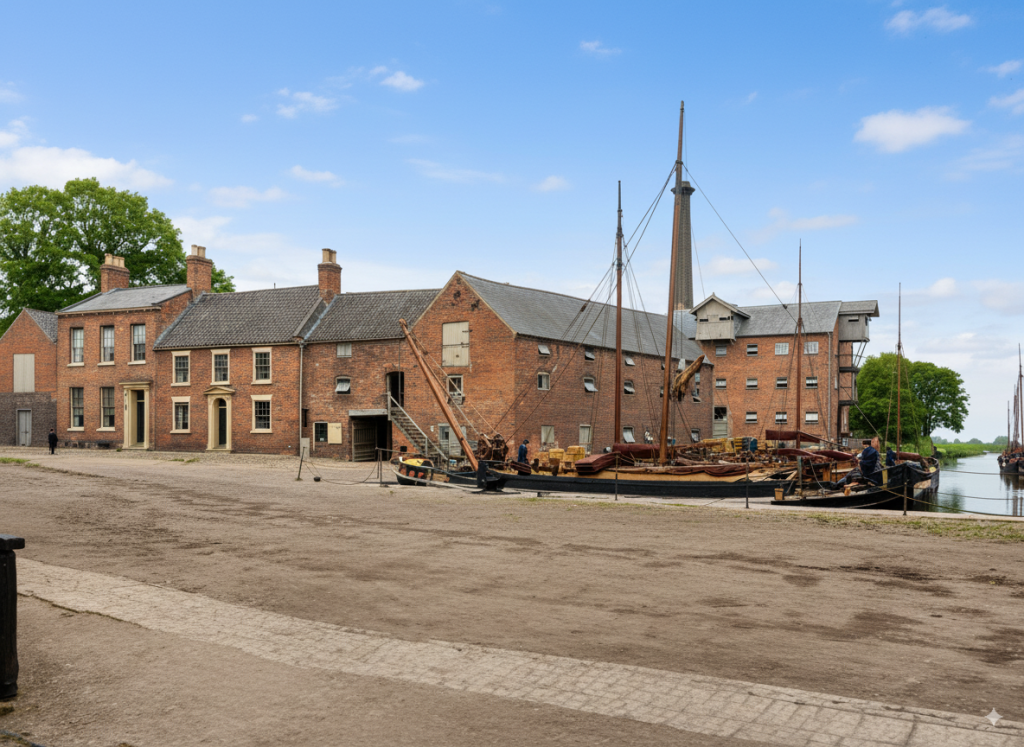
We start sat outside the Blue Bell public house with a view across the road. Keels line the banks.
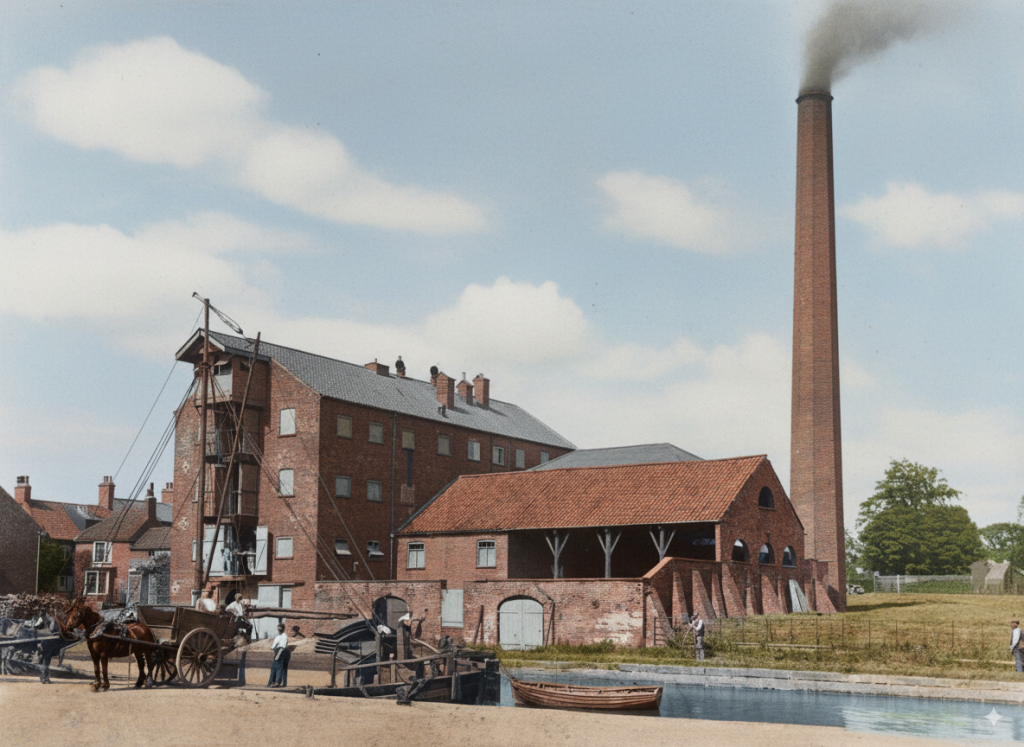
River Head Mill was a bone and corn mill. From the chimney I’m guessing that a steam engine was used, and coal would have been brought up the navigation to help power it.

Mortimers Warehouses at the end of the basin, and two keel waiting on the wharf, one near the crane. There is a Driffield Navigation work flat moored on the right side, and in the distance can be seen a steam launch.
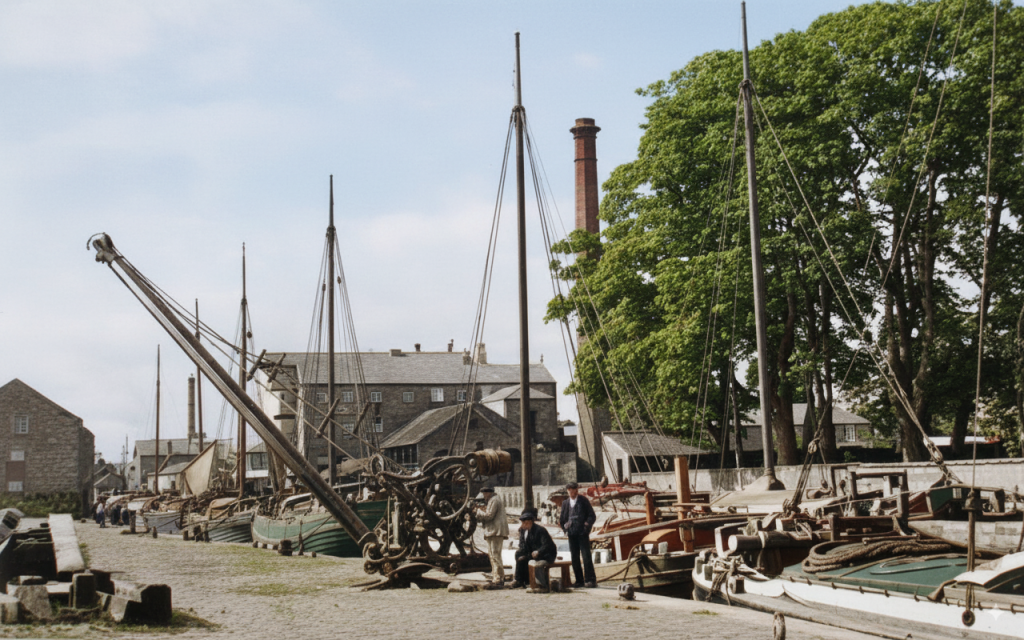
A busier day with many keels waiting on orders or loads.

Cargo handling on the wharf was a manual job, however cranes were used, and sometimes lines from the mast could be used to help.

When there was little wind moving the keels was a slow job, and sometimes the boats were pulled from the bank. However in this case I think they are just slowly working up with the little wind that is available, and a second barge has caught this one up before getting very far. Filling the lock would cause a flow which would also slow any boats heading upstream, and drawing water on a boat was generally looked down on.

Here a Humber Sloop tows a Humber Keel struggling with the slide wind along the canal.
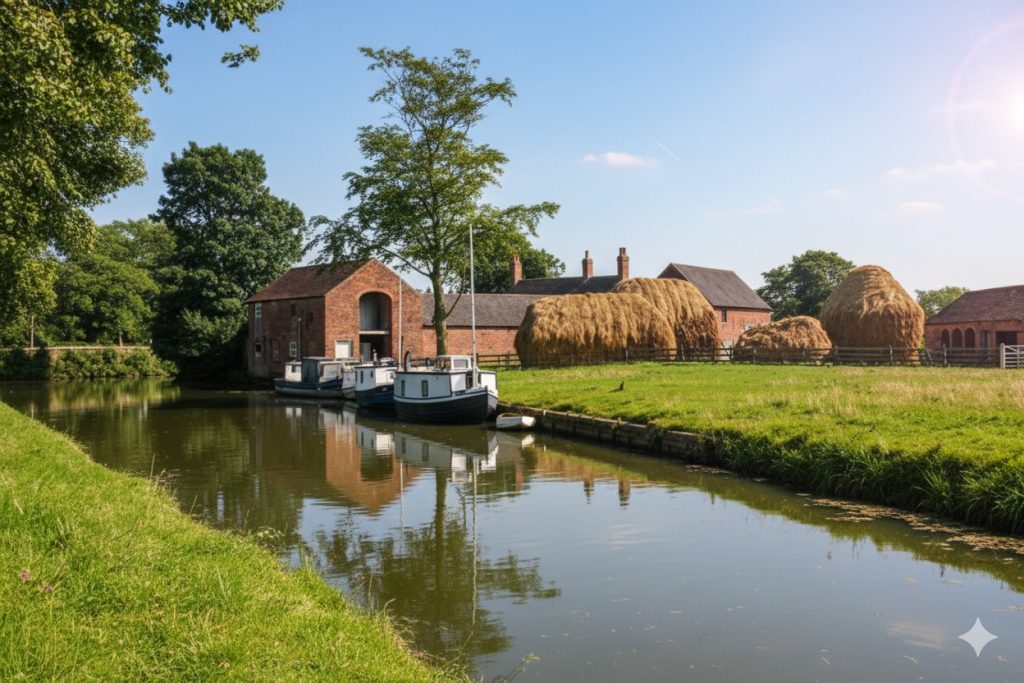
Further down the canal at Wansford there were some pleasure and house boats that people would use to get away to the countryside. There was quite a thriving community of people on these boats, and there are quite a few pictures of people enjoying themselves on them.
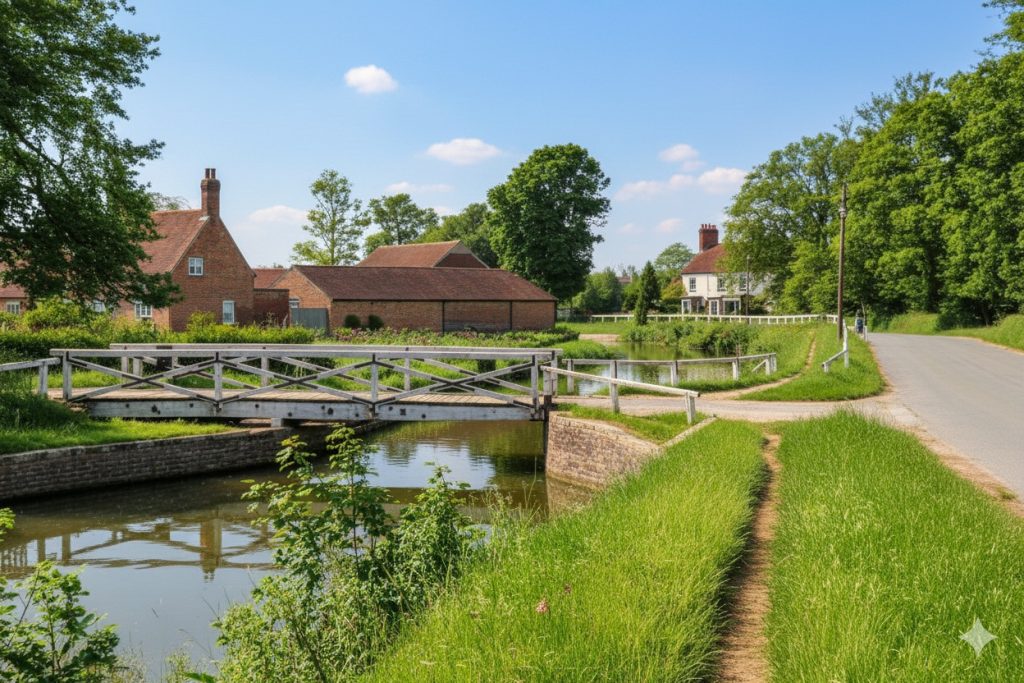
Just around the corner from the previous photo is Skerne Road Bridge, now fixed in placed by the council in the 1960, here we can see the original wooden swing bridge. Many trees have now grown along the banks breaking the view.
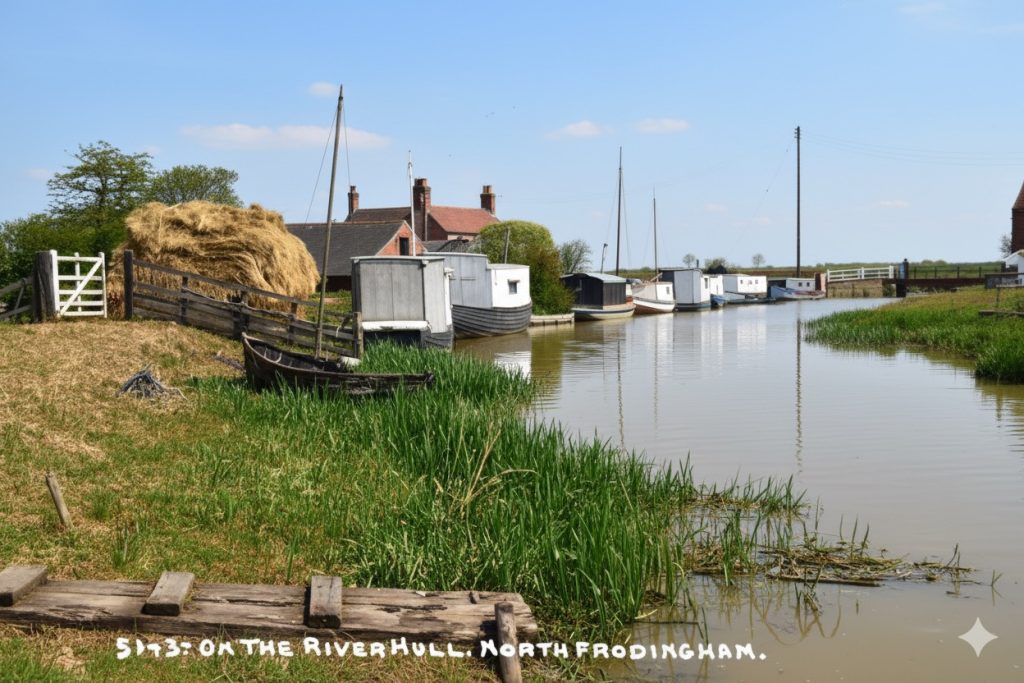
Next we head to North Fordingham Landing, and a view from the Frodingham Bridge shows more pleasure boats mooring along the nearly the end of the wharf.

Bethells Bridge in the 1950’s with local farm traffic

Swing Bridge Cottage, Hempholme. This colourised image shows the bridge keepers house on the ‘new cut’, built around 1811.
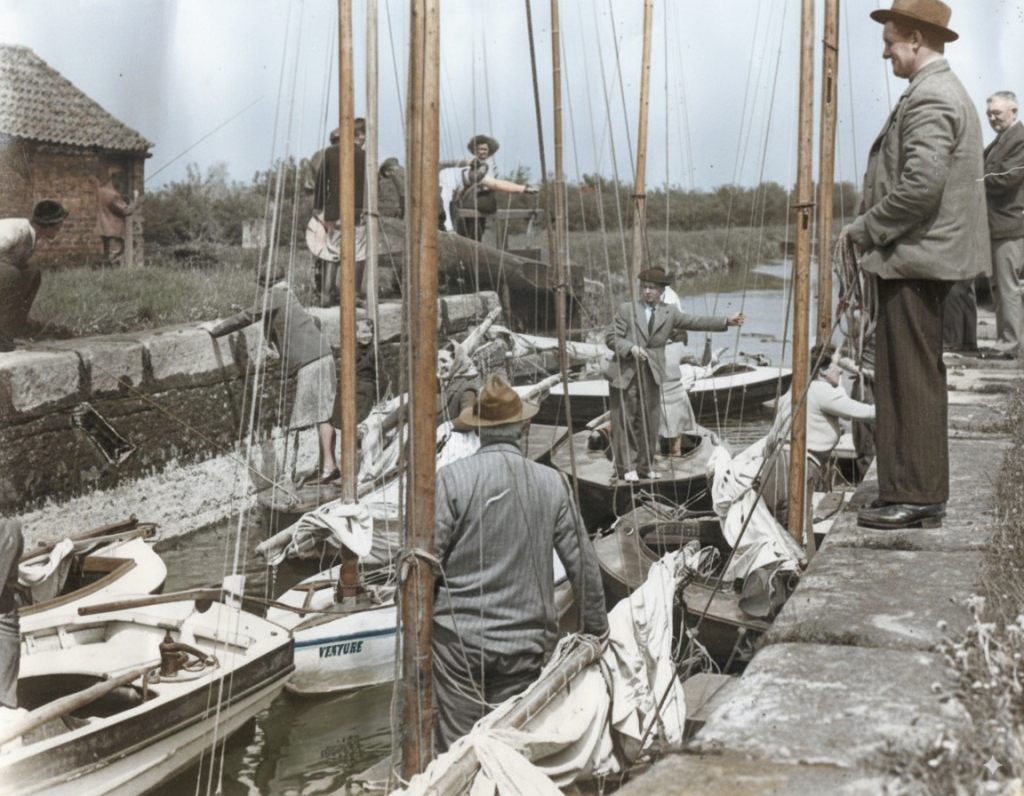
Our last image shows a colourised image of Struncheon Hill Lock during a Brigham Sailing Club outing.